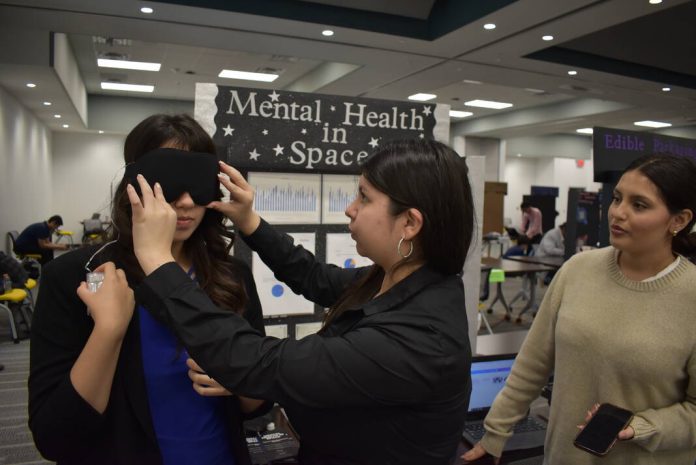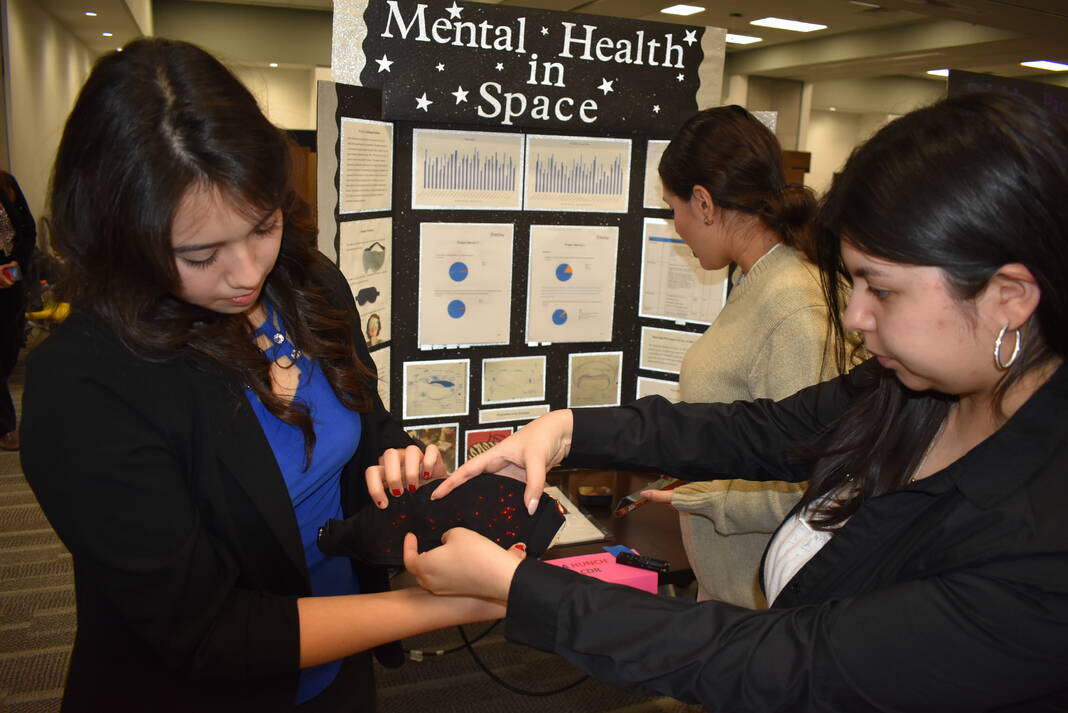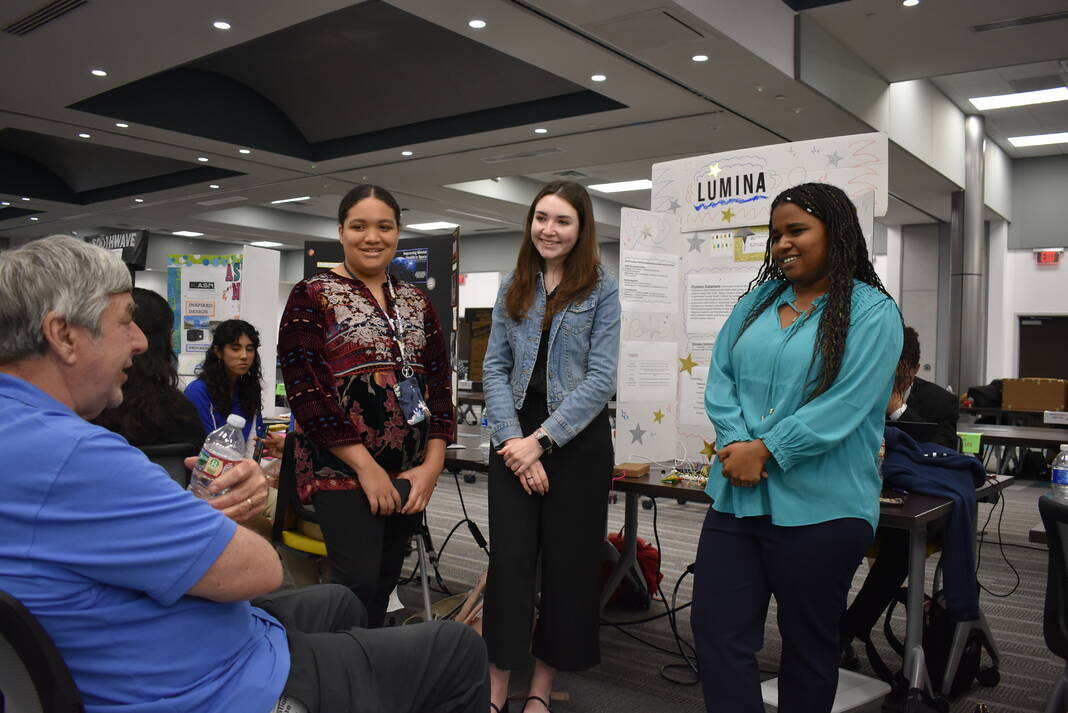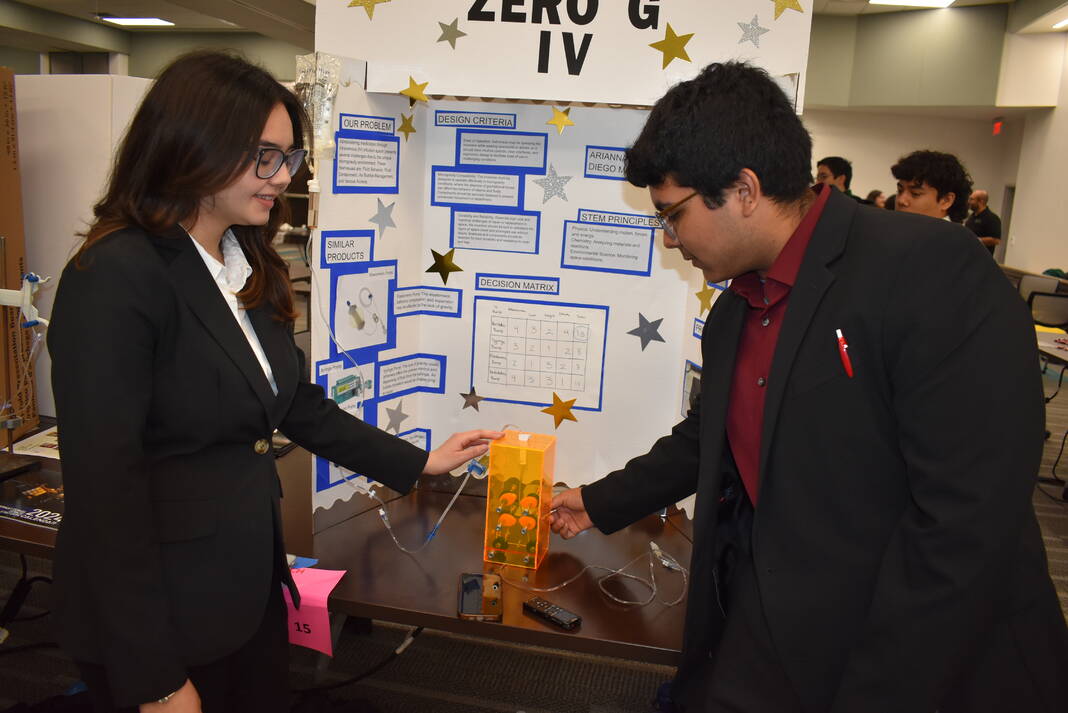
|
Only have a minute? Listen instead
Getting your Trinity Audio player ready...
|
MERCEDES — With about half a year put into their projects, students across the Valley were able to present their final prototypes for critical review for the NASA HUNCH program with the chance to advance to the next level of the program at the NASA Johnson Space Center in Houston.
Hosted on Tuesday at the South Texas ISD Central Office Teaching & Learning Center, students from South Texas ISD, Brownsville ISD and Harlingen CISD presented their projects to NASA officials who offered project feedback and overall guidance in their future endeavors.
NASA HUNCH is a project-based learning program where students learn 21st Century skills and have the opportunity to launch their careers through participation and design of real world products for NASA.
The program features eight different categories for students to participate in with only four being implemented in the Valley this year. Some of the programs on Tuesday were design and prototyping where students work on designing prototypes of items that astronauts would like to see used in space and in biomedical science, where students examine the physiological changes in space and find ways to mitigate them.
Having gone through several stages, on Tuesday students had their final stage, “critical review.” They will soon find out if they are one of the 81 student groups from across the nation that will be invited to the NASA Johnson Space Center in Houston.
Johannes Starks, regional mentor for the NASA HUNCH program, said she thinks it’s amazing to see how far projects have changed since the beginning and how the program overall exceeded expectations in the Valley.
“When we started in Dallas, it was very small, and it stayed small for a while,” Starks said. “The Valley came out and they were big starting with and I think this is just the beginning. I anticipate next year, we’ll probably double if not triple the number of teams that are going to be here and the number of districts that will be represented.”
When she first presented the idea in a meeting with South Texas ISD officials in September, she said she expected about 8 teams to participate. On Tuesday, 37 teams of students took the floor to present their hard work and creative thinking.
“It feels great to have such a big turnout,” Starks said. “I’m a big proponent of STEM, especially for our underserved populations, and making sure that everybody has an opportunity, which is my whole goal in coming down here.”

Seniors from Gladys Porter Early College High School, Dana Perez, Sandra Salazar and Lesly Vega, wanted to tackle mental health in space and more specifically how having a good amount of rest can help improve it.
Their curiosity resulted in a project for a wearable and technological eye mask to combat the physiological and environmental changes that astronauts face in space.
Salazar said before they started working on the prototype, they first did extensive research with existing sleeping masks and even gathered 25 participants on how much they would sleep with and without a mask.
“While we were developing our prototype, we wanted to focus on having red LED lights because through red LED light therapy, you’re able to stimulate more melatonin production, and that actually helps quality sleep,” Vega said, who loved working on the project since she struggles with getting enough sleep.
Perez said the final prototype was an eye mask with red LED lights and a cloth. Demonstrating the eye mask, she said it was satisfying to showcase all their hard work and time spent on the project.
“It just feels great to really collaborate with a team, get some opposing opinions and we just learn from each other,” Salazar said. “I think that’s the best thing that you can get out of this experience competing with your friends at this level.”

South Texas ISD Science Academy seniors Victoria Seguin, Makena Silva and AJ Simpson also took on mental health in space with their project called Lumina.
“It’s a therapy portable device but what makes ours different is that you get the light therapy, the gamma rays through your nostril,” Silva said.
Asked what made them want to take on this project, she said, “I want to major in psychology so mental health has always been a really important concept in my life.”
Simpson said the project made the group learn new things and step out of their comfort zones, like being in a professional setting and learning computer programming.

Also wanting to step out of their comfort zone and challenge themselves were South Texas ISD Science Academy Seniors Arianna Cass and Diego Martinez.
The duo worked on a prototype for IV fluid administration in space called Zero G IV.
“A big issue for us was the unique microgravity environment that’s present in space and the air bubble management,” Cass said. “Not getting air bubbles into your veins is crucial because an air bubble can be deadly. To prevent this, we’ve attached a vacuum pump to our IV tubing to keep most of the air bubbles contained inside the air bubble bag. And we’ve set up a series of filters that are hydrophilic to allow fluid to pass but not oxygen.”
With Cass inspired by her dad who works in a hospital and Martinez having a family background of military combat medics, they both wanted to challenge themselves and make their families proud.




